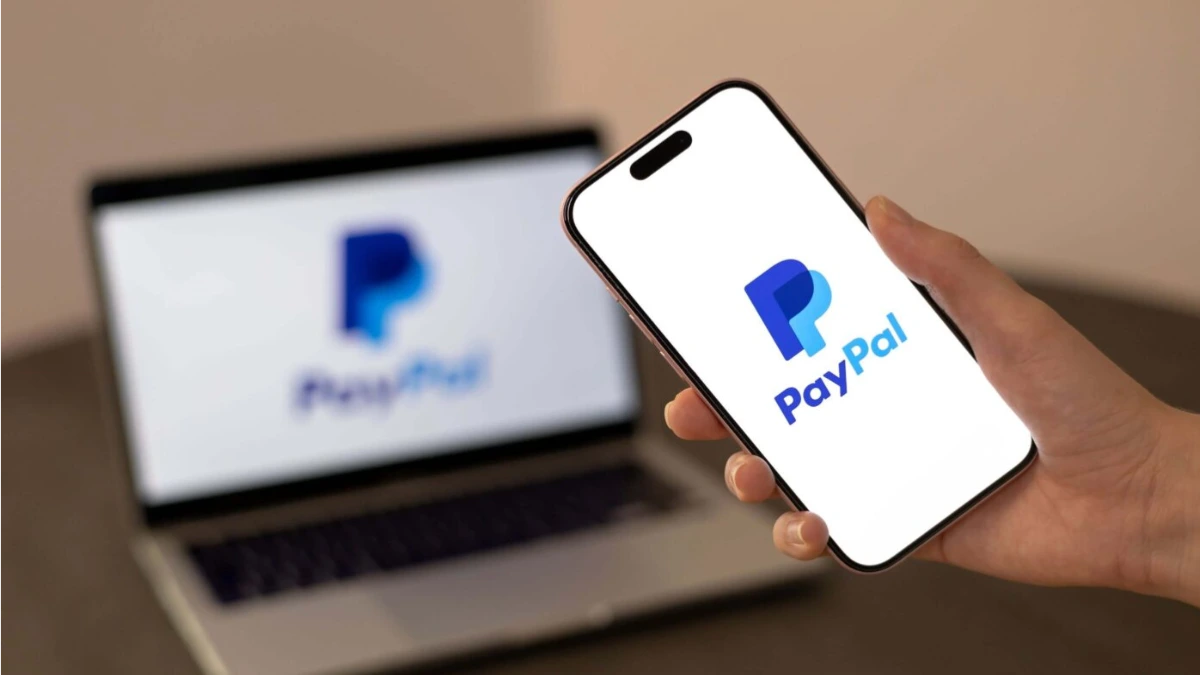SAN JOSE, Calif. — PayPal Holdings Inc. reported third quarter results that surpassed Wall Street expectations, sending its stock soaring nearly 15 percent in after hours trading.
The digital payments giant posted revenue of $8.42 billion for the quarter ended September 30, a 7.3 percent increase from the same period last year.
Non GAAP earnings came in at $1.34 per share, beating analysts’ consensus estimates by 11.2 percent. The results mark a rare positive quarter for PayPal, which has faced heightened competition in the global digital payments market.
The company’s performance suggests renewed momentum in consumer spending and a modest recovery in its merchant business.
PayPal, originally spun off from eBay in 2015 after being acquired by the online marketplace in 2002, operates one of the world’s largest digital payments platforms.
It enables consumers and merchants to send, receive, and process payments both online and in person, serving over 430 million active accounts globally.
The company has faced increasing pressure from rivals such as Block Inc.’s Cash App, Apple Pay, and Stripe, while managing slowing e-commerce growth post pandemic.
Recent interest rate hikes and tighter consumer spending have also weighed on transaction volumes across the fintech sector. Still, PayPal has remained a key player in digital finance.
Its five year annualized revenue growth of 10.1 percent underscores sustained demand, though the pace has moderated in recent years. Over the past two years, revenue has grown at a 6.2 percent annualized rate, below its historical trend.
“PayPal’s latest quarter shows resilience in a tough macroeconomic environment,” said Angela Morris, a senior analyst at FinTech Insights Group.
The company’s ability to exceed both top and bottom line estimates indicates its core payment processing business is stabilizing, even as competition intensifies.
Morris added that PayPal’s efforts to streamline operations and focus on high margin products like branded checkout and its Braintree platform contributed to stronger profitability.
Industry experts believe the results may restore some investor confidence following a volatile period marked by executive turnover and questions about PayPal’s long term strategy.
“This report is a relief for shareholders,” said Raj Patel, portfolio manager at Harborlight Capital. “It shows that PayPal still has pricing power and customer stickiness, which are critical in fintech.”
During the third quarter, PayPal’s $8.42 billion in revenue exceeded Wall Street’s expectations by 2.2 percent. The company’s total payment volume (TPV) a key measure of the dollar value of transactions processed rose 8.5 percent year over year to $404 billion.
By comparison, Block Inc., the parent company of Cash App, reported TPV growth of 9.3 percent in its most recent quarter, while Adyen, a European payment processor, posted growth of 11 percent.
Analysts said PayPal’s growth, though slower than some peers, reflects its mature customer base and diversified geographic exposure.
“PayPal’s transaction volumes are not growing at hyper scale rates anymore, but they are expanding steadily,” said Jordan Ellis, an equity strategist at Morningside Analytics.
“That’s what mature fintech looks like stable cash flow, modest growth, and sustained profitability.” For small merchants, PayPal remains an essential part of doing business.
“I use PayPal for most of my international clients,” said Sarah Jenkins, a freelance graphic designer based in Austin, Texas. “It’s reliable and widely accepted, even though fees can be a bit high.”
In contrast, some consumers are exploring alternative platforms. “Apple Pay and Cash App are more convenient for daily purchases,” said Michael Thompson, a tech enthusiast in Chicago. “But for online transactions, PayPal still feels safer.”
Merchant adoption has also benefited from PayPal’s growing in person payments business through its Zettle point of sale system, which expanded into several new markets this year.
Looking ahead, PayPal is focusing on improving its user experience, enhancing fraud protection, and expanding its digital wallet capabilities.
The company is also investing in artificial intelligence tools to better analyze transaction patterns and detect fraudulent activity in real time.
CEO Alex Chriss, who took the helm in 2023, said during the company’s earnings call that PayPal is “prioritizing sustainable growth and operational discipline.”
He emphasized that new product rollouts and cost optimization will remain central to PayPal’s 2026 roadmap. Analysts forecast moderate but steady growth for PayPal over the next year, with expected revenue in the range of $8.5 billion to $8.7 billion in the next quarter.
The company also reiterated its full year guidance, signaling confidence in continued demand for digital payments despite macroeconomic uncertainties.
“Digital payments are becoming the backbone of global commerce,” said Morris of FinTech Insights. “PayPal’s broad user base and established trust give it a strong foundation to compete, even as newer players emerge.”
PayPal’s stronger than expected third quarter results underscore its resilience in an increasingly crowded fintech landscape. With revenue growth rebounding to 7.3 percent and earnings exceeding projections, the company appears to be regaining its footing after a challenging year.
While growth may remain moderate compared with its early expansion years, PayPal’s scale, global reach, and steady profitability suggest it remains a central force in the evolving digital payments industry.

